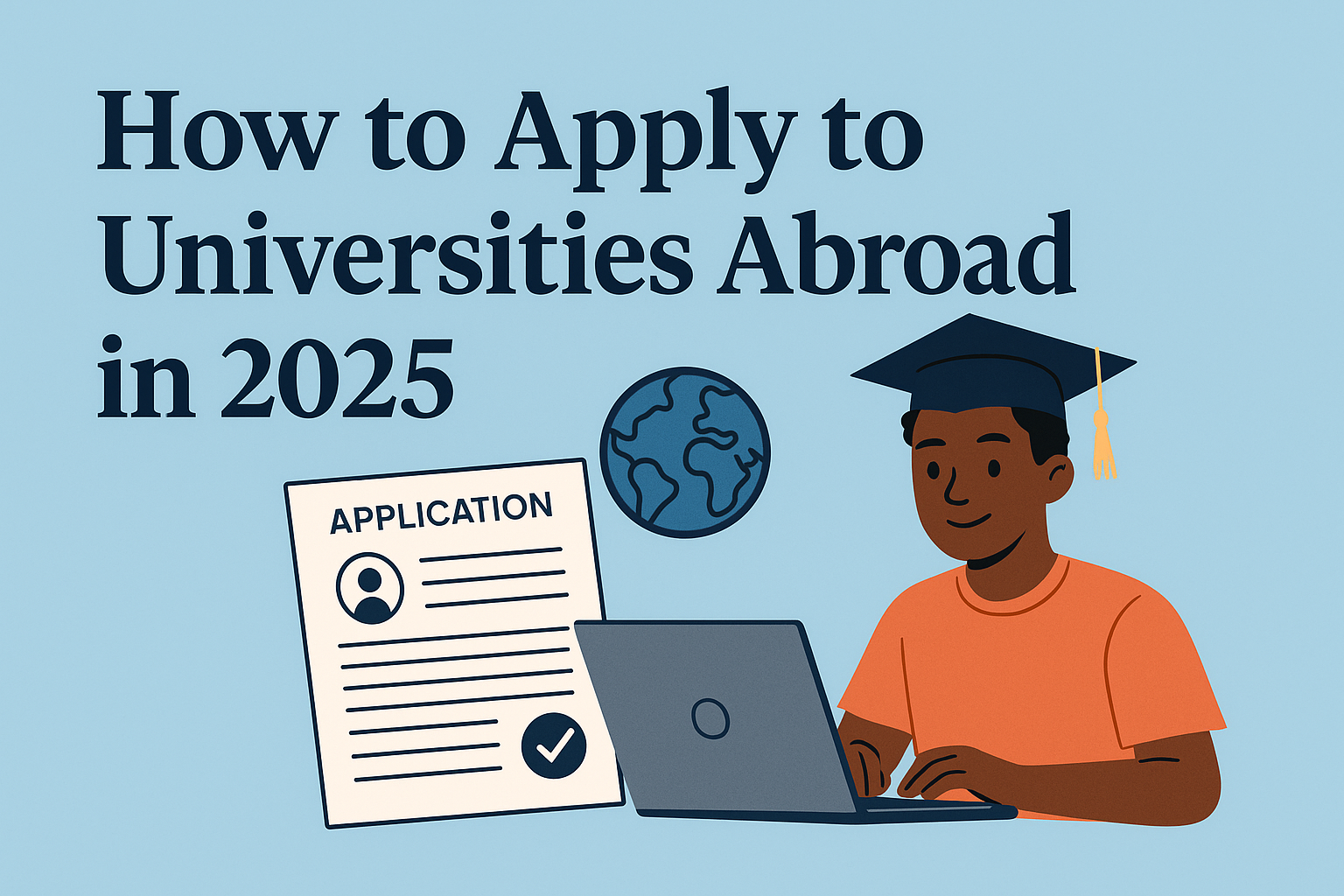How to Apply to Universities Abroad in 2025 (Step-by-Step Guide)
If you’ve been wondering how to apply to universities abroad but feel overwhelmed by the process, you’re in the right place. Applying to study in another country can open up a world of opportunities better education, higher earning potential, and global connections. But the process is often complicated, especially for first-time applicants.
In this complete guide, you’ll learn how to apply step-by-step, avoid common mistakes, and make your application stand out.
Why Study Abroad in 2025?
Studying abroad offers academic prestige, cultural diversity, and access to global job markets. Many top universities also offer fully funded scholarships, post-study work visas, and research opportunities.
Disclaimer: Requirements vary by country and university. Always confirm details on the official school websites.
Step-by-Step Guide: How to Apply to Universities Abroad
Step 1: Decide Where You Want to Study
This is more than just choosing a country. You need to consider:
- Language of instruction
- Cost of living
- Post-study work options
- Visa approval rate
- Tuition and funding availability
Top Countries in 2025:
- Canada – Easy post-study work permit, top-tier education
- United Kingdom – 2-year post-study work visa for international students
- United States – Diverse programs, high scholarship potential
- Germany – No tuition fees in most public universities
- Australia – Strong visa policy and graduate job market
Step 2: Shortlist Your Universities
Use platforms like:
Criteria to consider:
- Acceptance rate
- Tuition fees
- Scholarship options
- Language requirements
- Application deadlines
Create a spreadsheet with:
- University Name
- Country
- Course Name
- Application Deadline
- Scholarship Offered
Step 3: Prepare Required Documents
Most universities abroad require the following documents:
- Academic transcripts
- Valid international passport
- Proof of English proficiency (IELTS/TOEFL)
- Statement of Purpose (SOP)
- Letters of Recommendation
- Curriculum Vitae (CV)
- Proof of funds (for visa)
Tip: Use high-converting keywords like “IELTS requirement for Canada student visa” or “proof of funds for UK study visa” in your blog to attract CPC traffic.
Step 4: Write a Strong Statement of Purpose (SOP)
This is your chance to tell your story—why you’re applying, your career goals, and why that school fits you. Schools abroad want applicants with clear intentions.
Structure of a strong SOP:
- Introduction with purpose of application
- Academic background and key achievements
- Career goals and relevance of chosen course
- Why this university and country
- Conclusion with confidence and gratitude
Step 5: Take Required Exams (if any)
Check if your chosen schools require:
- English Tests: IELTS, TOEFL, Duolingo English Test
- Standardized Tests: SAT, GRE, GMAT
Tip: Some countries now accept Duolingo as a valid English proficiency test, which is cheaper and faster.
High CPC keywords to use:
- IELTS preparation course online
- GMAT score for MBA abroad
- affordable Duolingo English test centers
Step 6: Apply to the Universities
Many schools let you apply directly via their portal. Others use centralized systems like:
- UCAS (UK)
- Common App (USA)
- Uni-assist (Germany)
Pay the application fee and submit before the deadline. Some schools waive fees if you apply early or qualify for need-based financial aid.
Step 7: Apply for Scholarships or Financial Aid
Look for:
- University-specific scholarships
- Government-funded grants (e.g., Chevening, DAAD, Fulbright)
- External scholarships (e.g., Mastercard Foundation, Rotary International)
High CPC terms:
- scholarship for international students in USA
- fully funded master’s programs in Canada
- free education in Germany for foreigners
Step 8: Apply for a Student Visa
Once accepted, begin your visa process. Requirements usually include:
- Admission letter
- Proof of funds
- Language test results
- Medical tests or health insurance
Country-specific tips:
- UK Student Visa (Tier 4): Fast processing and online application
- Canadian Study Permit: May require biometrics and interview
- U.S. F1 Visa: Be prepared for a visa officer interview
High CPC keywords:
- student visa success rate
- visa interview tips for international students
- cost of international student health insurance
Real-Life Success Story: From Abuja to Vancouver
Chidinma, a 21-year-old aspiring software engineer from Nigeria, applied to the University of British Columbia in Canada using this process. She focused on a well-written SOP, scored 7.5 in IELTS, and received a 75% tuition scholarship.
“I didn’t think it was possible because I had no one to guide me. But once I broke it down step by step, it was all about consistency and showing I had a plan,” she shared.
Final Checklist
✅ Shortlist universities by location, cost, and scholarships
✅ Prepare all documents early
✅ Practice English exams with sample questions
✅ Tailor your SOP for each school
✅ Apply for scholarships at the same time
✅ Submit early to avoid deadline rush
Conclusion
Now you know exactly how to apply to universities abroad in 2025. While the process can seem daunting, breaking it into simple, manageable steps makes it achievable for anyone—regardless of background.
Whether you’re aiming for the U.S., UK, Canada, or Germany, success lies in planning early, being organized, and staying focused.






